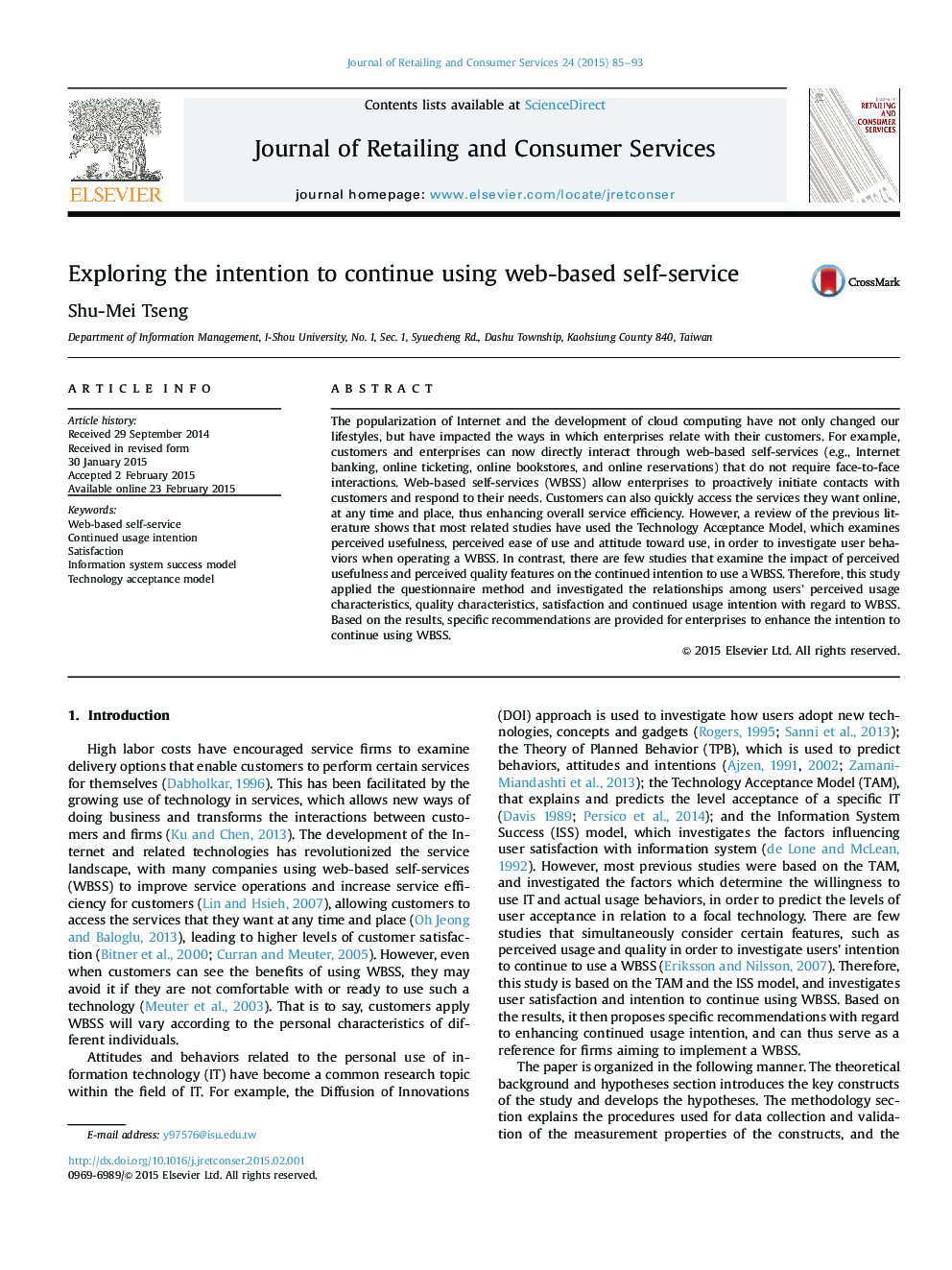| Article ID | Journal | Published Year | Pages | File Type |
|---|---|---|---|---|
| 1028818 | Journal of Retailing and Consumer Services | 2015 | 9 Pages |
•This study applies the ISS and TAM to investigate user intention to continue using WBSS.•This study applies the questionnaire method and PLS to collect and analyze primary data.•Specific recommendations are provided for enterprises to enhance the intention to continue using WBSS.
The popularization of Internet and the development of cloud computing have not only changed our lifestyles, but have impacted the ways in which enterprises relate with their customers. For example, customers and enterprises can now directly interact through web-based self-services (e.g., Internet banking, online ticketing, online bookstores, and online reservations) that do not require face-to-face interactions. Web-based self-services (WBSS) allow enterprises to proactively initiate contacts with customers and respond to their needs. Customers can also quickly access the services they want online, at any time and place, thus enhancing overall service efficiency. However, a review of the previous literature shows that most related studies have used the Technology Acceptance Model, which examines perceived usefulness, perceived ease of use and attitude toward use, in order to investigate user behaviors when operating a WBSS. In contrast, there are few studies that examine the impact of perceived usefulness and perceived quality features on the continued intention to use a WBSS. Therefore, this study applied the questionnaire method and investigated the relationships among users’ perceived usage characteristics, quality characteristics, satisfaction and continued usage intention with regard to WBSS. Based on the results, specific recommendations are provided for enterprises to enhance the intention to continue using WBSS.
